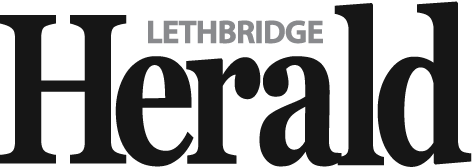Five things on the Artemis II mission to the moon with Canada’s Jeremy Hansen
By Canadian Press on October 4, 2025.

LONGUEUIL — Canadian astronaut Jeremy Hansen has spent two-and-a-half years preparing for his upcoming trip to the moon and back, and he’s loved every minute of it.
“I know that after I launch and come back, I’m going to miss what I’m doing right now,” Hansen said in an interview last week about all the work ahead of the 10-day voyage set to take place in early 2026 — the first launch window opens in February.
Hansen, 49, of London, Ont., is serving as a mission specialist for the Artemis II launch, alongside veteran NASA astronauts Reid Wiseman, who will be the commander, pilot Victor Glover, and Christina Koch, the other mission specialist.
The trip will be the first voyage to the moon by astronauts since the last Apollo mission in 1972 and the first crewed mission of the Orion spacecraft. Named “Integrity” by the four crew members, the capsule will approach the moon and travel around it before returning to Earth.
Here’s five things to consider as Hansen prepares to add another chapter in Canadian space history.
“Condensed” Operations:
It’s quick trip, albeit one fraught with danger. If all goes according to plan, the crew will spend about 10 days in space, much less than the standard six-month shift for astronauts on the International Space Station, Wiseman told a recent news conference.
“When you’re going to the space station, you’re going up there for six months of hardcore science,” Wiseman said. Mission control plans everything and “you just get up as a good astronaut everyday and you get the job done.”
But the Artemis II mission includes a lot of unknowns. “There’s going to be a lot of unexpected stress, and just how we wake up every day, stay calm, keep our demeanour, focus on excellence, focus on the mission, focus on each other, respect each other’s space,” Wiseman said.
Mathieu Caron, director of astronauts, life sciences and space medicine at The Canadian Space Agency, describes the mission as “very, very condensed.” The schedule includes a detailed work plan for every crew member for all 10 days.
Tight quarters and a mission of firsts
The quartet will live in the Orion capsule with a habitable volume of 330 cubic feet, which NASA says gives the astronauts “about as much living space as two minivans.”
If the mission is successful, it will make Hansen the first non-American to travel beyond the lower-Earth orbit. Glover will become the first person of colour to enter lower-Earth orbit and Koch the first woman to do the same.
It is also Hansen’s first mission in space since being named to the corps in 2009.
Fellow Canadian astronaut Jenni Gibbons, 37 of Calgary, was appointed in November 2023 as backup to Hansen and will serve as a CAPCOM — an astronaut who acts as a go between for mission control and the spacecraft.
Capsule cuisine, with a little taste of Canada
Natalie Hirsch, project manager, operational space medicine at the CSA, says food for the Artemis II mission is carefully planned to meet the astronauts’ needs while accommodating the space and weight constraints of the Orion capsule.
The crew will eat rehydratable supplies — items that are dehydrated and packed in bags — and also thermostabilized food, which is packed in a metallic pouch instead of a can. Canned food, NASA has decided, is too heavy for the trip.
Five Canadian products will be sent on the mission for the crew to share: pure maple syrup, a maple cookie, smoked salmon bites, shrimp curry and rice, and a super-seed cereal.
Exercise remains important
In space, the crew will be able to perform both cardiovascular exercise and resistance training using a flywheel, a compact device designed for the Orion spacecraft, Hirsch notes.
Wiseman quipped during a recent news conference that the capsule will feel more cramped when Hansen starts exercising, given his six-foot-two-inches frame. “Yeah, Canada did get more than its fair share of the volume on this mission by assigning me to this and I’ve heard it acknowledged many times, so, I’m getting a little bit conscious about my size,” Hansen joked.
In microgravity, it can be difficult to maintain a stable position, especially for astronauts who are just getting their “space legs.” The crew will have to keep track of this as they begin exercising.
Canadian Pride: moon-bound Hansen
Caron says the buzz ahead of the mission is “palpable throughout the agency,” headquartered south of Montreal. The most significant point of pride is that Artemis II marks a monumental step for Canadian space exploration.
Hansen will be carrying with him small pendants — half moons with the family birthstones, inscribed with “moon and back” — that belong to his wife and kids.
A subsequent mission, Artemis III, which will land astronauts on the moon for the first time in more than 50 years, has been delayed until at least mid-2027. NASA has said it will include a woman and a person of colour on that mission to the moon’s south pole.
The Artemis IV mission will be the first to assemble the Gateway lunar space station. The small lunar outpost that will orbit the moon will include a Canadian contribution — Canadarm 3.
This report by The Canadian Press was first published Oct. 4, 2025.
Sidhartha Banerjee, The Canadian Press
33-32




